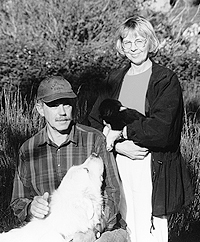
Michael and Marie Heath
M&M Heath Farms
Buhl, Idaho
Ecological issue: Developing a systems approach to managing pests.
Solution: Diversification and crop rotation. Heath grows potatoes, specialty beans, tomatoes and numerous other varieties of vegetables, alfalfa, dry beans, sweet corn, wheat, barley and hay. His operation is certified organic and crop roations limit pests that thrive on a single food source. The rotation spans about seven years: alfalfa hay for at least three, followed by a row crop like potatoes, beans or sweet corn, then a year of wheat or barley. In year six, Heath plants another row crop, follows with a year of a grain, then rotates back to hay. The farm supports a healthy number of beneficial insects, and Heath keeps predators guessing with the long rotation. Learn more...